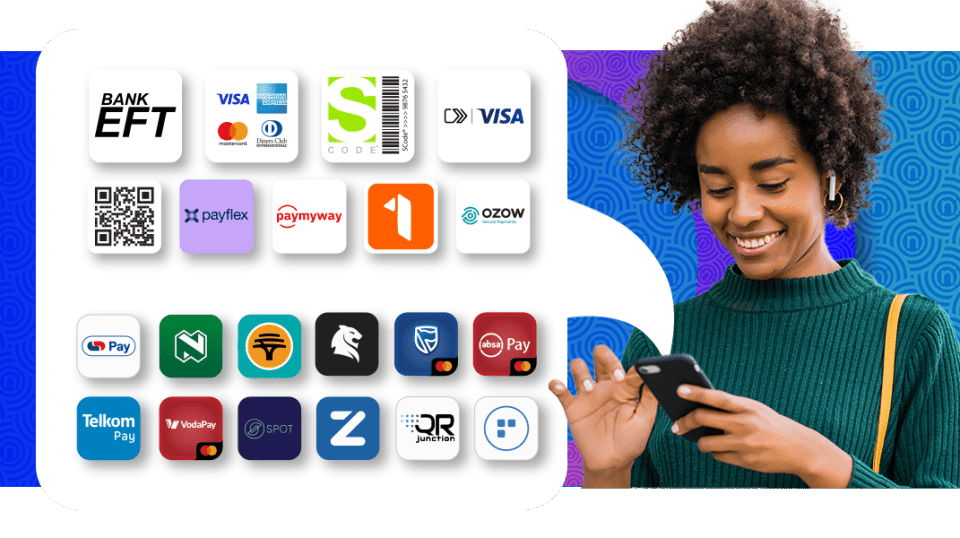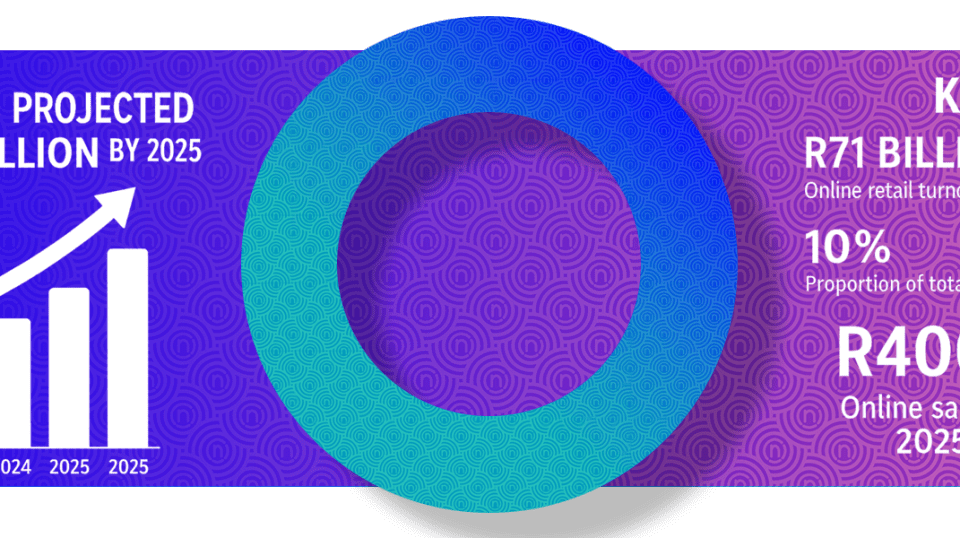
WooCommerce alternatives: Comparing top competitors
June 27, 2025
Simple steps to integrate BNPL into your business
July 4, 2025In the ever-expanding digital landscape, your business needs payment solutions that are not only cost-effective but secure and convenient—for both you and your customers. That’s where voucher payments come in.
Prepaid services, digital purchases, or gift cards can all be purchased with payment vouchers, meaning you can quickly process transactions while reducing risks. They also help you manage cash flow by ensuring upfront payments and can make purchases more accessible for customers who prefer not to make use of bank cards.
So, how do voucher payments actually work, and why should your business use them? In this guide, we’ll break down the key benefits of voucher payments, how they can improve customer experience, and some best practices for implementing and managing them.
Plus, you’ll get practical tips on how to apply them effectively. No matter what your business is, voucher payments could be the smart payment solution you’ve been looking for. Let’s dive in!
Would you like to know more about supporting Voucher payments on your gateway?
Speak to a Payments Advisor today.
Why businesses should offer voucher payments
Vouchers offer numerous advantages, making transactions smoother, safer, and more budget-friendly. Incorporating voucher payments into your business model can change the game. They help reduce third-party and transaction costs, minimise the risk of theft, and provide a seamless experience for customers.
Whether you're a small business or a large retailer, offering vouchers as a payment method can enhance customer satisfaction.
Here’s why you should consider offering voucher payments.
1. Cost-effectiveness: no chargeback fees
One of the biggest headaches for businesses when accepting credit cards is chargebacks. A customer can dispute a transaction, and if the bank sides with them, the business loses both the product or service and the money. With voucher payments, that’s not an issue. Since vouchers are prepaid, all sales are final, eliminating the risk of chargebacks.
2. Security: reduced fraud risks
Vouchers provide an extra layer of security compared to credit or debit card payments. Since vouchers don’t require customers to enter sensitive information, the risk of fraud or identity theft is significantly lower.
Digital vouchers are even more secure because they use a unique code that isn’t easily duplicated or misused. Businesses can also set expiration dates or usage limits, reducing the chances of fraud and ensuring that vouchers are used as they’re supposed to be.
3. Convenience
Voucher payments boast the flexibility that many customers love. Not everyone has easy access to a credit card or bank account, so vouchers provide a simple alternative. Customers can preload funds onto a voucher and use it whenever they need to make a purchase or payment.
From the business side, voucher payments simplify payment processing. There’s no need to handle large amounts of cash or wait for delayed payments from third-party providers. The transaction is completed instantly, ensuring a smoother experience for everyone involved.

How can payment vouchers improve customer experience?
Providing voucher payments isn’t just beneficial for your business—it also makes shopping easier, safer, and more convenient for your customers. Whether they’re looking for a flexible payment option, a way to budget their spending, or an opportunity to take advantage of special offers, vouchers provide a smooth experience.
These are a few examples of how they enhance customer satisfaction:
1. Increased accessibility for unbanked customers
Voucher payments make shopping accessible to more unbanked customers by presenting an easy, prepaid option that doesn’t require traditional banking.
For customers who rely more on cash, vouchers provide a secure and convenient way to buy things. This helps your business reach more people, including young shoppers, travellers, or people who prefer to avoid traditional digital payments.
2. Encouraging customer loyalty
When customers purchase vouchers with rewards programs or promise a discount in the future, they’re making a commitment to return to your business. This naturally encourages repeat visits and boosts customer loyalty. Instead of spending money elsewhere, they’ll come back to redeem their voucher, increasing sales and strengthening their connection with your brand.
Additionally, vouchers make great gifts, which means customers may introduce their friends and family to your business. This brings in new potential customers and expands your reach without the extra marketing costs.
3. Promoting special offers and discounts
Voucher payments allow businesses to create exciting promotions that draw new customers and reward existing ones. Some popular ways businesses use vouchers in marketing include:
- Bonus deals: “Buy a R50 voucher, get an extra R10 free.”
- Limited-time seasonal offers: Encouraging purchases during peak shopping seasons.
- Prepaid subscription discounts: Offering a lower price when customers buy in advance.
These promotions can increase sales, drive engagement, and make customers feel valued. When shoppers see that they can get extra value through voucher payments, they’re more likely to take advantage of the deal. This creates a win-win situation for both the customer and the business.
Would you like to know more about supporting Voucher payments on your gateway?
Speak to a Payments Advisor today.
How to implement voucher payments in your business
Adding voucher payments to your business is a smart move that can attract more customers, boost sales, and provide a hurdle-free shopping experience. Whether you run a nifty online store, a brick-and-mortar shop, or both, implementing voucher payments is easier than you might think.
Here’s a simple guide to get started:
1. Choose the right voucher payment provider
The first step is finding a reliable voucher payment provider that suits your business needs. Some businesses choose providers like 1Voucher or BluVoucher, while others create their own branded vouchers. If you’re unsure, research popular voucher payment services that align with your industry.
Look for one that provides:
- Easy integration with your existing sales system, whether you use an online checkout or a point-of-sale (POS) system.
- Fraud protection to ensure secure transactions and prevent fake vouchers.
- Multi-channel support, so customers can use vouchers in-store, online, or even through a mobile app.
- Choose a voucher system that is widely used and can bring in the adoption stats of the popular 1Voucher that is already in use in locations and popular retail stores like Pep. This allows for broad and easy access.
2. Set up a smooth redemption process
Customers should be able to redeem their vouchers effortlessly, whether online or in-store. A complicated process can frustrate them and reduce the chances of repeat purchases. Having a clear expiration policy and terms of use for vouchers will also help avoid confusion.
Here’s how to make it easy:
- For online stores: Add a voucher code entry field at checkout so customers can apply their voucher discount seamlessly.
- For physical stores: Use barcode or QR code scanners to validate vouchers quickly.
- Train your staff: Make sure employees understand how to process voucher payments, including checking for expiration dates and verifying codes.
3. Market your voucher payment option
Once your voucher system is in place, it’s time to let customers know about it. If they don’t know vouchers are available, they won’t use them.
Promote your voucher payments through:
- Website banners – highlight your vouchers on your homepage and checkout page.
- Social media ads – run targeted promotions to encourage purchases.
- Email campaigns – send offers to existing customers, like “Buy a R100 voucher, get R20 extra.”
- In-store signage – use posters or flyers to inform walk-in customers.

Best practices for managing voucher payments
Presenting voucher payments is a great way to attract customers and increase sales, but managing them properly is a must to ensure a smooth and hassle-free experience.
Here are some best practices to help you track, secure, and comply with regulations when using voucher payments:
1. Track usage and redemption rates
Keeping an eye on how vouchers are being used helps you optimise your strategy and improve future promotions. By analysing the data, you can adjust your voucher deals to better match customer preferences, ensuring they drive sales and engagement.
Here’s what to keep an eye on:
- Number of vouchers sold – are they popular among customers?
- Redemption rate – are purchased vouchers being used quickly or sitting unused?
- Usage trends – which products or services are most frequently purchased with vouchers?
2. Prevent fraud and misuse
Since vouchers hold real value, it’s crucial to keep them secure and prevent unauthorised use. Unique one-time codes prevent multiple redemptions of the same voucher. Set expiration dates. This encourages timely use and limits long-term liabilities.
Try to restrict usage by setting rules on how many times a voucher can be used or limiting it to specific purchases. Safeguards like these protect your business from fraud while maintaining a fair system for customers.
3. Ensure compliance with financial regulations
Voucher payments can come with legal and tax implications. To stay compliant, check local regulations on voucher payments and consult with an accountant to ensure proper tax reporting. Lastly, clearly outline terms and conditions to protect both your business and your customers.
Voucher payments and emerging digital payment trends
Voucher payments are becoming increasingly popular as businesses adapt to new digital payment trends. Alongside traditional vouchers, many companies are now integrating real-time payment solutions to provide customers with more flexibility and security.
One key trend is the rise of instant payment systems like PayShap in South Africa. This system allows customers to transfer money instantly, making transactions faster and more convenient than traditional bank transfers. Not that these systems can only transfer smaller amounts, so there’s usually a maximum on how much money you can transfer. However, it is a cheap option for real-time payments.
Another similar system is RTC (Real-Time Clearance), which ensures payments are processed quickly, reducing delays and improving the whole user experience.
By supplying voucher payments alongside instant payment options like PayShap and RTC, businesses can cater to a wider audience. Some customers may prefer prepaid vouchers for budgeting, while others may opt for real-time transfers for faster checkouts.
As digital transactions continue to evolve, businesses that embrace a mix of voucher payments, real-time transfers, and other emerging payment methods will stay ahead of the competition. The ticket is to showcase secure, flexible, and easy payment solutions that suit every customer’s needs, ensuring a relaxed shopping experience.
Final thoughts: are voucher payments right for your business?
And that’s it: the business case for voucher payments. Now you know that voucher payments present businesses with a cost-effective, secure, and convenient way to process transactions while improving customer accessibility.
By reducing fraud risks, eliminating chargebacks, and ensuring upfront payments, they help businesses manage their cash flow better. Plus, they can supercharge customer engagement, especially when used for things like gift cards, prepaid services, or exclusive promotions.
Voucher payments for specific industries like retail and eCommerce, as well as service providers like internet, airtime, and electricity, are becoming more common. With more businesses thriving with this method, it is becoming more and more desirable.
If you're ready to simplify payments, attract more customers, and improve financial security, voucher payments might be the perfect addition to your business.
Note: This is a good place to link "Voucher Payments for Specific Industries: A Deep Dive" once it's live.
Would you like to know more about supporting Voucher payments on your gateway?
Speak to a Payments Advisor today.

Candice Sergeant is a digital dynamo at Netcash, where she’s on a mission to help South African businesses level up their online game. As an eCommerce Product Owner, she’s got her finger on the pulse of the latest trends and technologies, constantly seeking out ways to boost sales and streamline operations. With a knack for spotting opportunities and a passion for innovation, Candice is your go-to guide for taking your e-commerce business to the next level.



